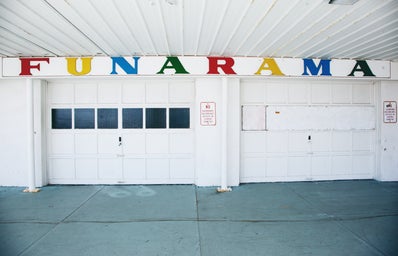Although Disney is currently getting heat for white-washing certain characters of color, they aren’t entirely at the butt-end of society. For years, Disney has been subtly setting standards for the feminist movement and tweaking the role of women in the home since the first animated princess movies came out.
Snow White may have seemed like a stereotypical mother/housewife figure for the seven dwarves, but she didn’t do most of the work. The first princess movie Disney released in 1937 showed a scene in which Snow White orders the dwarves to clean up and cleans with them, not for them. Not super radical, but it was different from the customary “I’ll do the dishes, honey; you’ve had a long hard day at work. Go sit in front of the television with this fresh-baked pie I made for you,” that typically represented that time period. Snow White did not clean because it was her “place.” She cleaned because the dwarves’ hut was filthy and it needed to be done, and since she was staying with strangers who were kind enough to take her in, she wasn’t going to sit on her rump all day and allow them to wait on her. She was showing gratitude. Even without ordering the dwarves to clean up their own crap, Snow White was revolutionary for being a young lady that moved in with seven men out of wedlock. The scandal!
Disney scaled it back for the next couple of movies, Cinderella and Sleeping Beauty, but they came back in 1989 with a rebellious teen who didn’t follow her father’s orders: Ariel. Young women had been rebelling openly since the twenties, but Ariel was different in that her rebellion ended well. Her rebellion wasn’t the stereotypical “make mistakes, learn from them, go back to being an obedient daughter because father knows best” sort of story that was enforced by parents up until then. Ariel’s rebellion taught her lessons, but she was all the happier by the end of it and got exactly what she wanted: legs. And also the prince.
Only two years later, Disney came out with Beauty and the Beast: the story of an intelligent young woman who is obsessed with reading and refuses to conform to the social standards of her small town caught between a “hideous” former stereotypical rich white boy who learns his lesson for being a jerk and a “hunk” of a stereotypical privileged white boy who did not give a damn about her happiness, much less that he was the ultimate jerk. Compared to today’s standards, Beauty and the Beast isn’t all that revolutionary, but for a young woman to go live alone with a man out of wedlock was scandalous. She also did not follow the whims of the other young ladies in the village and swoon over Gaston because she was looking for personality and intelligence, not looks, money, or sustainability… Another radical concept for young women who had been taught that they needed to find a man who could work to pay for their future family’s bills and home. Even when Belle found the guy she loved, she left him! Think of the audacity! The truth of the matter was that her priorities were elsewhere. The men were not the determining factor of her decisions.
The next year Aladdin was released. Again, the girl wanted nothing to do with riches and power. Jasmine fell in love with the personality of Aladdin, obviously not his money or authority. Jasmine attempted to convince her father that something was super sketch about his advisor, but he would not listen to her (no way, I’m shocked!). In the end, Jasmine ends up helping clean up the mess that her naive father and boyfriend made and in turn it is implied that she gained equal footing with the czar as the czaress.
Disney’s final main debut of the 1990s was Pocahontas. While more reimagined than the historical story than Disney’s other embellished tales, Pocahontas was another game-changing movie in which a single young woman stopped a war. Granted, she stopped the war because she was in love with the guy on the opposing side, but she still had the capability and earned the respect to stop the war. She also turned down marriage to the strongest, most attractive man in the tribe because she simply didn’t vibe with him — talk about a power move.
Perhaps the most wildly radical Disney princess came last in the 20th century. Mulan chopped off her hair and became ten times as “manly” (as far as General Li Shang described the word) as the other men in her squadron to protect her father and defend her country. Not to mention the trauma she experienced when she attempted to take a bath on the grounds that “just because I have to act like a man doesn’t mean I have to smell like one.” Oh, and again we see a young woman living with several men, none of whom she is married to. What’s with all these reverse harems, Disney? Anyway, Mulan was clumsy and bold, unlike the graceful, gentle persona that women are still sometimes expected to adopt.
Disney’s princesses aren’t perfectly imagined. They are still used even today as examples to reinforce the social restrictions on women, but when they were released, these characters were radical and fantastic in that they were new. Not new conceptually, but new in that the point of view of the young women who just wanted to live their lives was revealed and emphasized with a happy ending. I still don’t particularly like Snow White at all, but I respect the role she played in feminism and her role in beginning one of the most legendary movie collections of all time.


